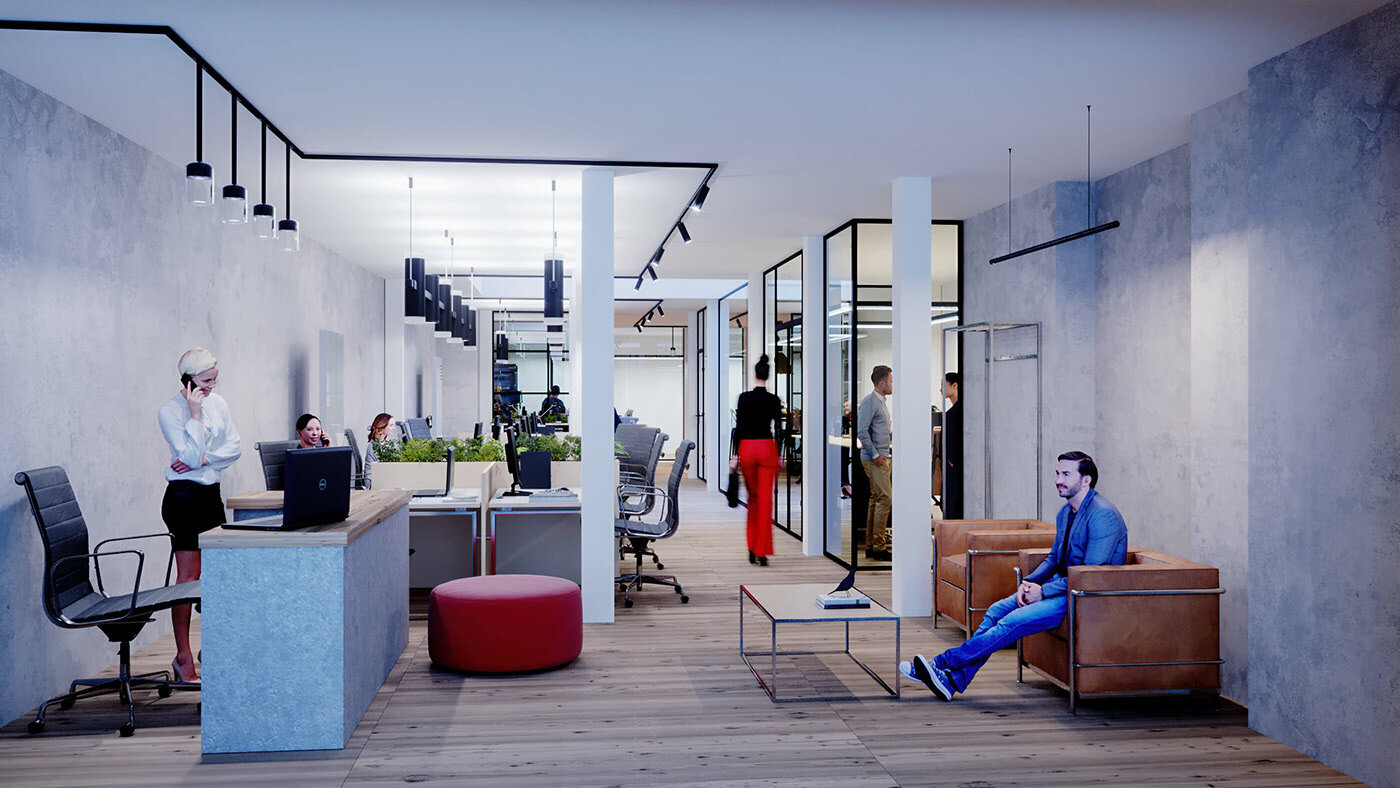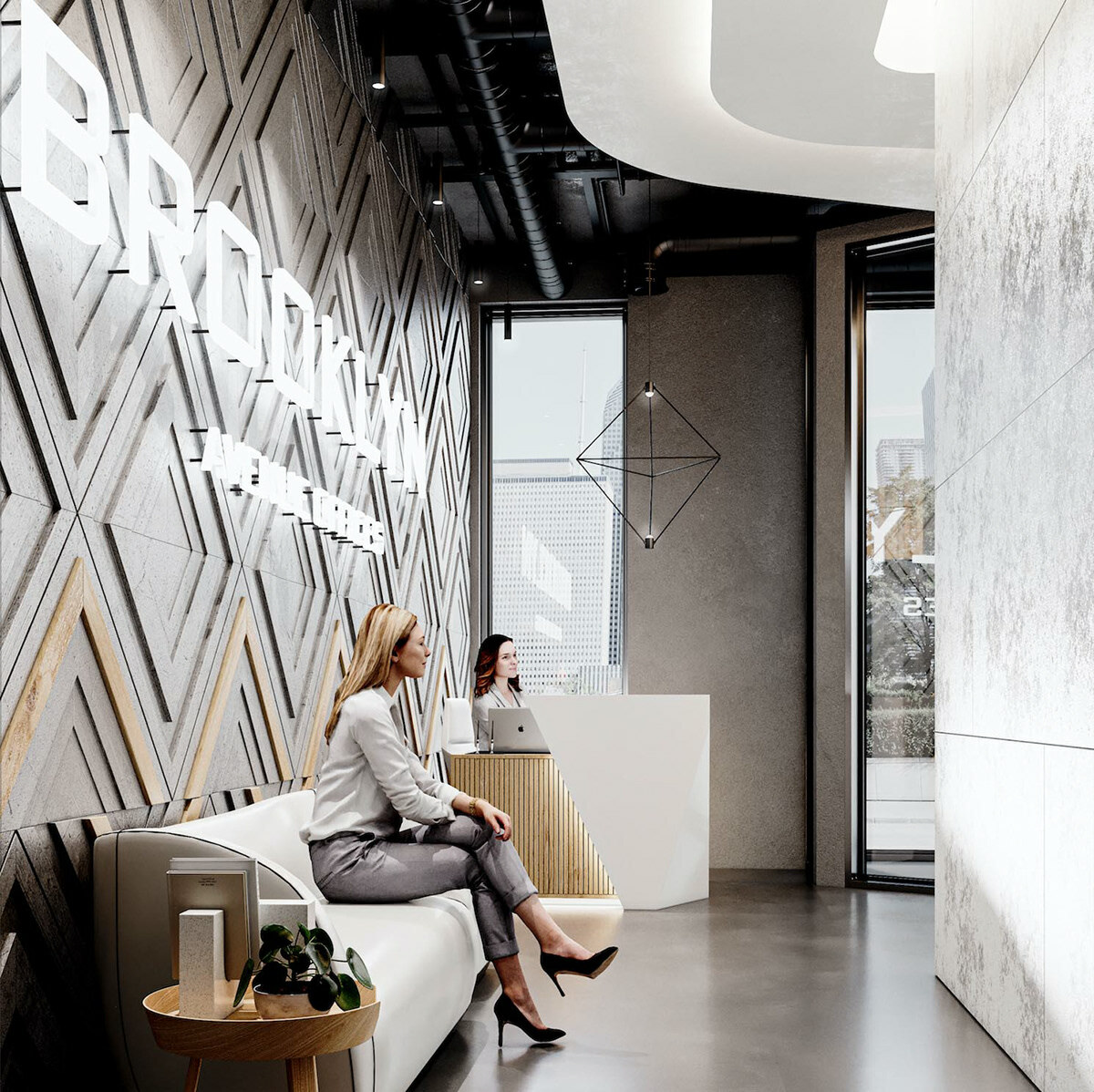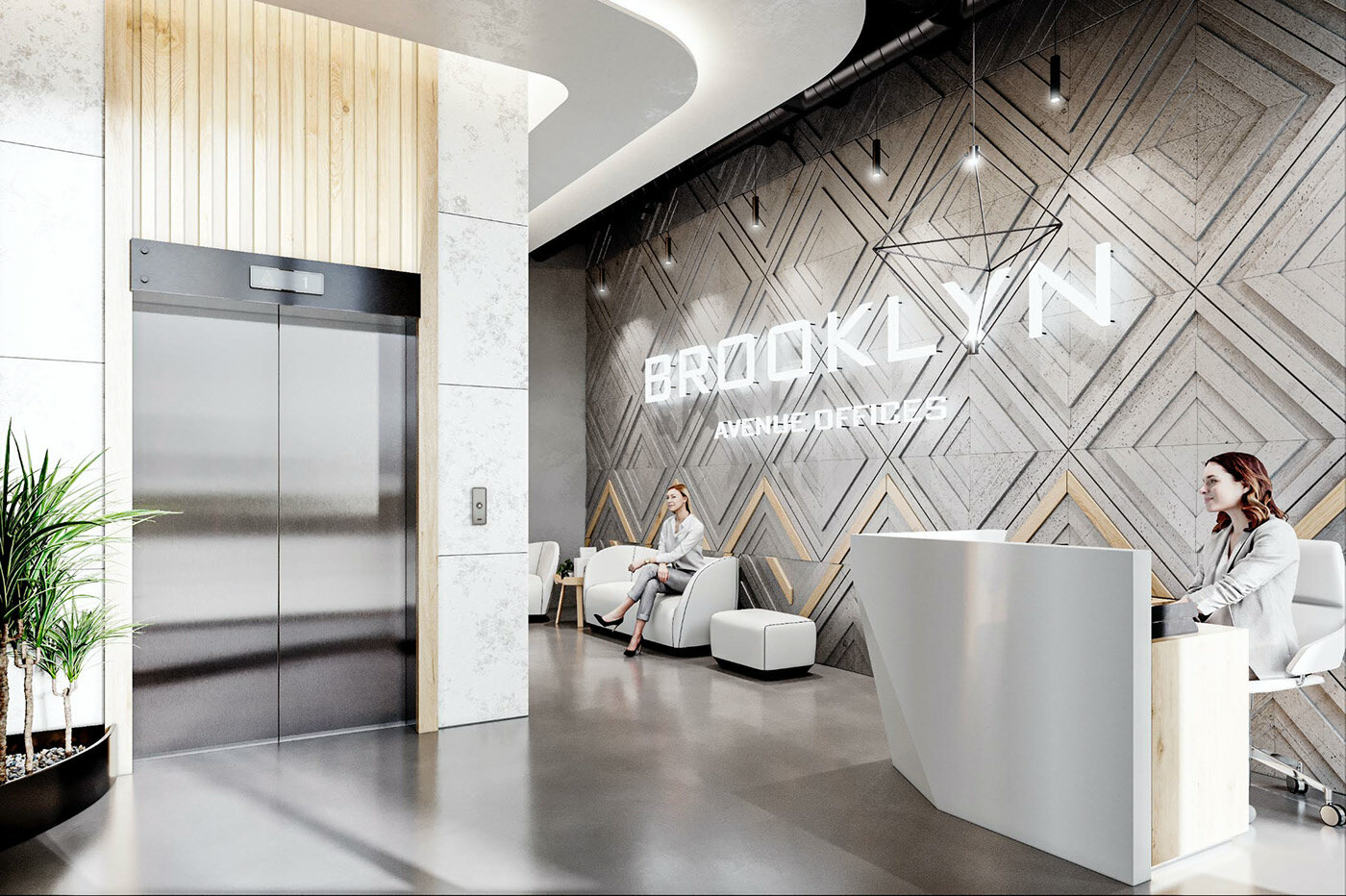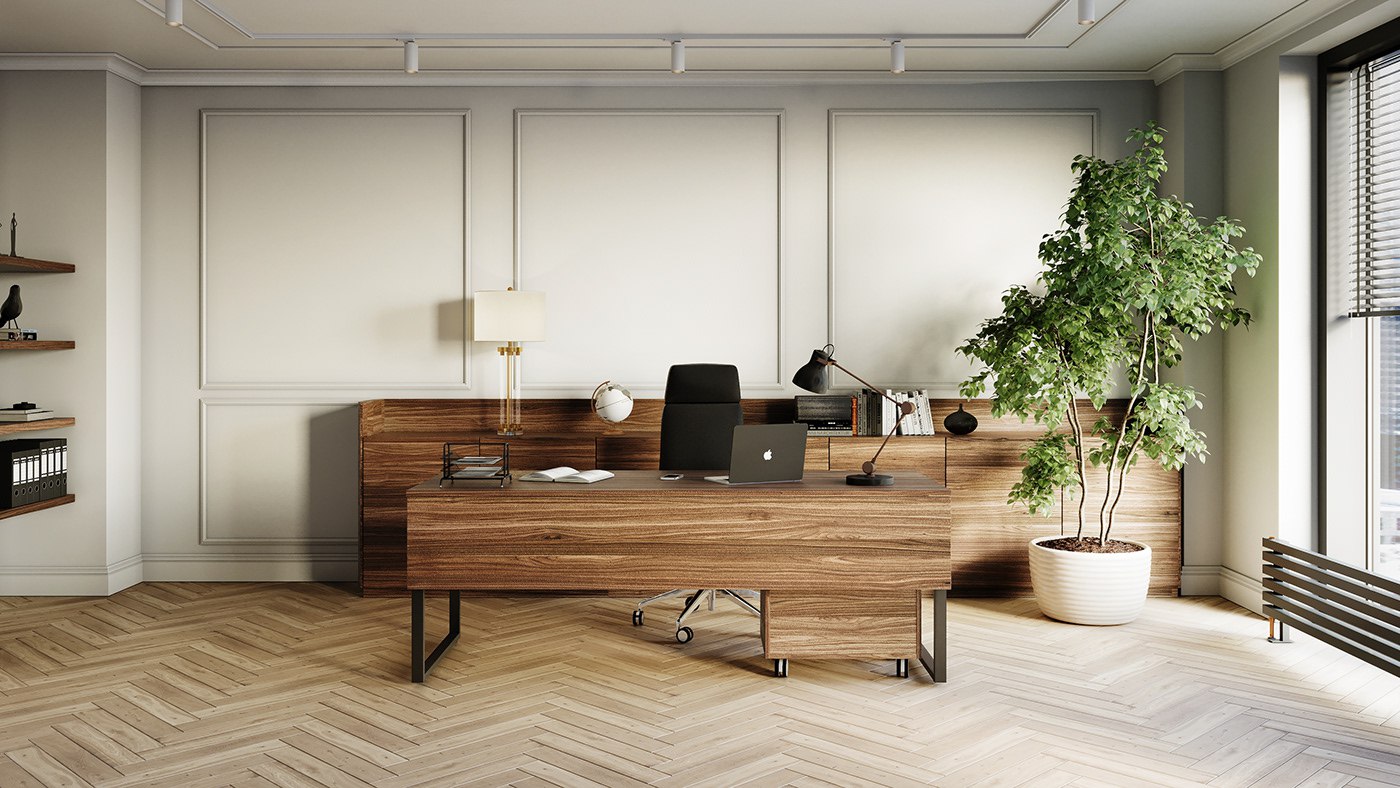Software for 3d rendering produces exhilarated objects, a reflection of their actual proportions and appearance. The furniture, textures, lighting, details, and mood of the space are all represented by these industrial office space renderings.
Industrial office space rendering is based on computer images representing 3d modeled office area with furnishing and decorating items in its interior as well as exterior space, such as a balcony or a rooftop for parties.
There are numerous predominant kinds of renderings, which include a static, walkthrough, and panoramic. They all can be used to showcase the indoor layout of the space. The styles of office space rendering you select will depend upon the visible representations you need to create.
Architects and designers may utilize 3d rendering and modeling tools to assist office owners to comprehend what the development of their office space will appear like, covering exact features such as the interior and exterior of the area. A design, building drawings, and supplementary sketches of a counter, and seats are used to create 3D visualizations for the office. Roofing and blueprints, and also equipment, product options, décor, and a power supply, must all be included.
Office space rendering definition
An office space rendering refers to the image, graphic, or scene with a variety of different settings utilizing classic modeling techniques such as drawing by hand, or current technology renderer programs.
The usage of 3d rendering services on machines is quite frequent currently. As a result, for good office space rendering, one may depend completely on a 3d architectural studio or 3d rendering professionals.
Benefits of office space rendering for design development
If you ask what impact can office space rendering have on professional designers’ or architects’ work, the answer would be that it alters all of it. By proposing an idea to collaborate with customers’ input and graphic modifications, 3D renderings improve the whole process of office space development. Finally, lifelike 3D representation assures that the architect’s customer receives exactly what they desire – and sometimes much more. Peek for some of the most enticing advantages of office space rendering!
Introducing an Idea at a Presentation
Prospective buyers can quickly comprehend design aspects thanks to new office space rendering. Because everything is visible, there’s hardly anything to tell. This is a significant advancement from days when a designer had to use speech and sketches to convey design functionality and visual techniques. Customers will no longer be subjected to aliasing!Furthermore, because presentations are so competitive, distinguishing out is a necessity if you want to be considered for a selection. And 3D visualization can provide that shock factor to the project, allowing it to gain even more wins with the viewer. Hardly anything beats the aesthetic appeal of a lifelike image or computer-generated animations in engaging consumers in the project in order to make them believe as if it were authentic. Shareholders will admire the designer’s attention to every detail and willingness to go the extra distance. Inside this approach,3d visualization services technique gives an edge when marketing office space ideas.
Approval of an Idea
The major responsibility of a designer when presenting an office idea to customers is to describe the aesthetic choices. It involves the arrangement of space, equipment, hues, and textiles, but also how all of these components work together to create a unique aesthetic. However, illustrations and plans cannot completely convey how these aesthetic decisions impact the overall concept of office space. The former somehow doesn’t accurately reflect the look of the office area, although the latter always depicts one interior region of office space out of a single viewpoint. As a result, a designer must describe the beauty of office space in ideas, and clients must just picture it in his head. CG representation, on the other hand, shows the design with the accuracy and authenticity of a photograph. The viewers are able to witness the ideas in action and determine whether or not they really like them. As a result, they may offer changes or endorse the idea at the same time. If the latter is the situation, it’s far preferable to first figure out how the consumers genuinely feel first moving on with the job. If the consumers are satisfied, the designer may continue working with the confidence that he is on the proper track.Highlighting Styling Cues
Designers and architects provide the plan, choosing materials, and illumination, as well as use possibilities and functionality of each location in an office space during the design phase. There seem to be simply just so many elements for the viewer to take in at the same time.Although drawings and presentations are useful, they do not provide a comprehensive image. Presentations showing the number of hues and textures, for example, properly portray the object’s texture but do not depict how the finished carpeting would seem. A drawing can be used to convey a broad concept, but it will not reveal hues or materials. As a result, the designer must manage a range of objects to assist viewers in combining disparate aspects into a single, cohesive vision.
3d rendering of office spaces combines the two aspects of conventional multiple representations. They present all of the design features in photorealistic quality, all in one image. CGI allows people to explore the arrangement and observe the total effect of the office space yet presenting specifics.
Multi Specifications
Prior to actually moving forward with deployment, it’s a good idea to double-check that the office space fits all or most of the proprietors’ needs. Because detailed design frequently involves multiple revisions, keeping track of all the modifications and seeing the overall picture could be difficult. The project changes as the design propose new alternatives and the clients express their opinions. Furthermore, several of the items he requested or committed to may be misunderstood by the office owner.With lifelike 3D rendering, it’s now simple to exhibit the finished product in all of its glory. All of the modifications, significant and tiny, will be perfectly obvious at the end. The space office owners will have a complete view of the situation and will be able to make a more informed decision in whether to persist or make changes.
Multiple Types are shown
Consider the situation when you need to offer several design possibilities. For example, a customer for a co-working space must pick among two surface options. It’s tough to describe the decisions. The designer tried to help the customer see two multiple variations of the area that simply did not exist, informing him about the benefits and drawbacks of each alternative. All parties put in a lot of effort, but they were both anxious. As it is quite hard for a client to imagine and decide what he likes most. Nothing could be simpler now that office space rendering is available. CG Artists may design images with several types of flooring so that all designer has to do is show the audience. Both will judge the worth of each option for themselves and make a selection depending on just what best matches the area.Increasing the Effectiveness of Marketing Strategies
When an office space ought to be bought or rented, the proprietors frequently want to find a purchaser before starting development. They accomplish this by launching a series of extremely innovative and aesthetically effective advertisements. As a result, businesses require greater photography for usage on sites, social media networks, official documents, and so on. Because there isn’t much to photograph at this point, photorealistic office space rendering is really the only option. As a result, a designer or an architect who already owns these components will have a significant edge.The benefits for office owners from using office space rendering
To begin with, office rendering will assist the office owner in seeing their project when it has been completed in the most realistic manner possible.
The office owner could visualize the entirety of the concept without needing to construct it. Elements including such equipment and hues in office space 3D rendering may ensure that the 3D-produced image is very accurate. They’ll be able to think about what they’re doing subsequently with just this workplace project after that. The office space rendering would also assist the office owner in determining if their project should be accepted or not, in addition to calculating every next activity to be undertaken for the project. It’s also possible to anticipate the hazards the company might face and the benefits the company might obtain from adopting this office project.
Next, office space rendering may assist office owners in determining the best elements to use, but also how to style and set appropriate furnishings for the office space.
A significant component in the successful completion of a project is the selection of rendering and construction activities. When an office space rendering is used, the company will be able to determine which components are appropriate or inappropriate for the space altogether. They’ll be able to comprehend the safest and perhaps most appropriate way to embellish and organize items in an office rendering for further organizing in real life.
The advantages to architectural and design firms using office space rendering
Architectural and design businesses gain greatly from office renders as well:For example, office space rendering can boost the architecture and design company’s business brand recognition. Office architecture has a lot of intricate aspects and requires a lot of attention. As a result, if the design firm is well-versed in office rendering, the customer would have more full confidence. It will increase the architect’s company’s image and distinguish the design firm among customers who are unfamiliar with office rendering.
Furthermore, office space rendering will assist architectural businesses in generating additional cash and profit. Raising the price of a specific business to architecture companies. Customers should be able to identify the firm very easily. You’ll be inundated with agreements in no time. It will assist the design firm in generating and maximizing profits.
Conclusion
Now we will summarize and briefly indicate the main advantages of office space rendering over just photos, sketches, as well as other inefficient methods.
Old methods are less adjustable and multipurpose as 3d visual representations developed using digital design tools. The advantages make 3d renderings more useful:
- Demonstrating interior space which is not yet real
- Different design configurations are simple
- It is possible to make it responsive and interactive
- A high-quality realistic image
- Various applications



